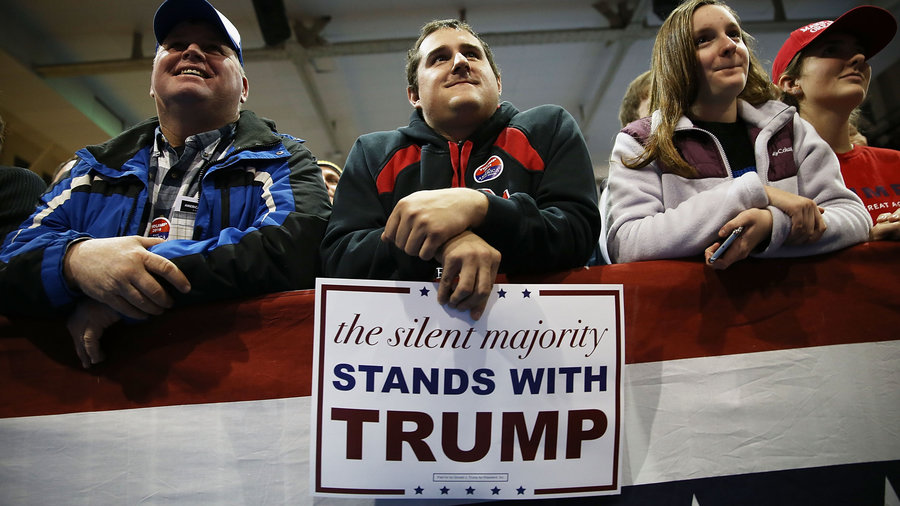 The Silent Majority: From Nixon to Trump
The Silent Majority: From Nixon to Trump
The “silent majority,” a term coined by President Nixon has been described from a speech Nixon made on November 3, 1969, as, “the idea that there are two kinds of Americans — the ordinary middle-class folks with the white picket fence who play by the rules and pay their taxes and don’t protest and the people who basically come from the left.”
In Nixon’s era, he used the term to gain support for his plan to end the Vietnam War. Nixon, during a time of racial conflict and anti-war protests, targeted middle-class white Americans who felt forgotten. Similarly, Donald Trump used this same rhetoric to gather his base during his 2016 run for office. In 2015 while campaigning, Trump tweeted:
I am looking forward to being in New Hampshire tomorrow. The silent majority is taking our country back. We will MAKE AMERICA GREAT AGAIN!
— Donald J. Trump (@realDonaldTrump) August 19, 2015
When traditionally used, the term’s racial undertone calls on the disparaged white middle-class who have been silenced by the growth of minority populations. In the same way, the “silent majority” is often linked to Trump supporters and in doing so, highlights the racial tension present in the country. However, a recent Vox article demonstrates another interpretation. Rather than highlighting the racial aspect often used with the expression, the article uses the “silent majority” to describe the hidden voters. The “silent majority,” as Vox writer Mattew Yglesias describes, “America is facing another silent majority election—one in which the story has been all about Trump’s supporters but the victory will go to Clinton’s.”
The New Silent Majority
Yglesias reasons the outcome will be because “the new silent majority is quiet,” describing the new majority as minorities and women. In recent years, the middle-class has become even more diverse, and Clinton’s policies appeal more to minority and working class families than Trump’s. While Trump maintains the white working class vote, they are no longer the majority.
Despite this, minority and women voters have not made the same impact on the media as the typical ‘Trump voter,’ and there is less energy in Clinton’s voting base compared to Trump’s. In a sense, Nixon’s majority is now the noisy majority. The conservative, white middle-class voter has garnered much more attention than anyone on Clinton’s side.
Despite Trump’s base taking over the spotlight this election cycle, Yglesias projects that Clinton will come away with a victory. He argues that just like in the primaries when it seemed like all the excitement was for Bernie Sanders, Clinton pulled through with overwhelming high numbers. Her voters might not be in your face and loud, but they are out there and in big numbers.
While evidence proves Clinton is winning the minority and women vote, and while it is true a ‘typical Clinton voter’ hasn’t had the media attention given to a ‘typical Trump voter,’ to say Clinton is going to get the silent majority vote is far-reaching. In fact, it is Clinton who should be fearing the silent majority, that is, the silent majority in its original form. It seems much more logical to think a voter would go silent during the election and not tell anyone they were voting for Trump. Voters are more likely to stick to their party than vote for the opposing side. Clinton is more successful convincing conservative middle-class voters not to vote for Trump than she is telling them to vote for her. Clinton may have a new silent majority, but she still needs to worry about the silent voter creeping in on election day and voting for Trump.


I found it interesting that you chose to write about the silent majority. It’s a term that we don’t hear that much and plays a pivotal role in the candidates and how they effectively appeal to the silent majority in their campaign. I also completely agree with the last two sentences of the post. She criticizes Trump and preaches to the American people why not to vote for him more than she speaks about herself and why they should vote for her.